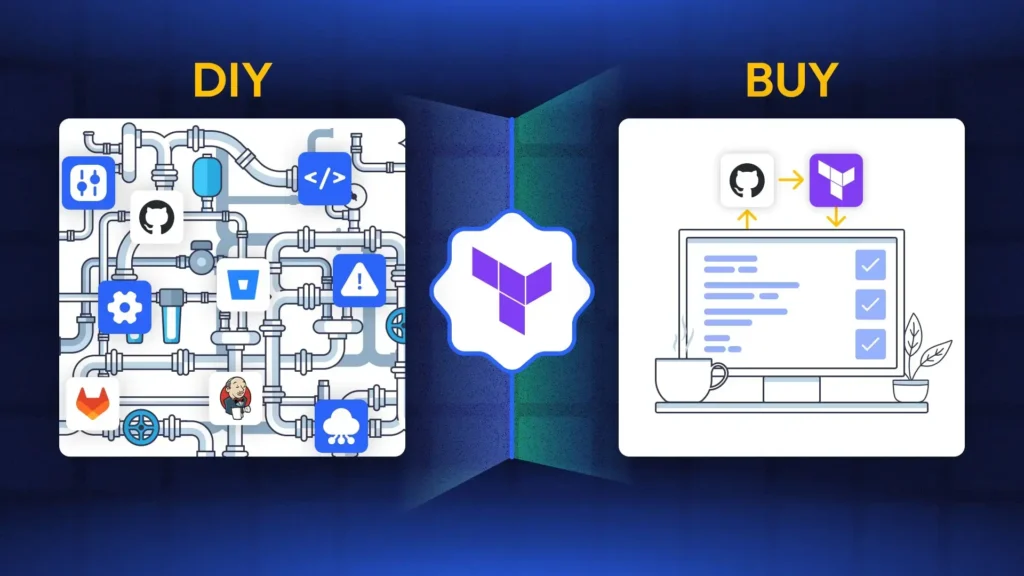When teams say “terragrunt less verbose,” they usually want quieter pipelines. For SOC 2, you need more than silence: you need sanitized logs that never leak secrets, yet still carry enough context to debug failures. This guide shows how to configure Terraform and Terragrunt for minimal chatter, apply CI-native masking, and gate outputs so sensitive values don’t escape. You’ll get practical flags, a portable redaction wrapper, and a plan for capturing the right evidence. The goal: quiet by default, sanitized always, loud only on controlled failure paths.
At a Glance: Terragrunt Less Verbose in Practice
– Identify where secrets leak in Terraform/Terragrunt logs and what to suppress.
– Apply “terragrunt less verbose” defaults in CI without losing signal.
– Add CI-native masking and a redaction wrapper before logs persist.
– Configure Terraform to prevent printing secrets at the source.
– Map controls and evidence to SOC 2 expectations.
Why “Terragrunt Less Verbose” Matters for SOC 2
Excess verbosity increases exposure risk. Tokens, keys, account IDs, and internal URLs frequently appear in provider initialization and error traces, and they slow reviews. SOC 2 expects principle-of-least-privilege logging, retention control, and clear evidence of guardrails, not just less noise. Aim for quiet by default and redact consistently, then permit targeted verbosity only in isolated, masked re-runs.
These controls also support shift-left compliance and security practices, reducing review time and risk drift across pipelines. See how organizations standardize guardrails with ControlMonkey’s Shift Left Compliance & Security.
Where Secrets Actually Leak in Terraform/Terragrunt Logs
Provider initialization and authentication traces (e.g., cloud SDKs) can echo credentials, account IDs, or endpoint URLs if debug is enabled. Error stacks and panics may dump environment variables and interpolated values, especially when TF_LOG is set or modules print helpful but unsafe diagnostics. terraform output and module debug prints will expose values unless output blocks are marked sensitive = true, and plan JSON artifacts can include attribute values if you emit them to the console.
One team enabled debugging globally in order to investigate an intermittent plan failure. The CI log captured a short-lived cloud token and a private domain—enough for an auditor to flag a gap and for the team to rotate credentials overnight.
Terragrunt Less Verbose Defaults That Also Reduce Leakage
Set safe environment defaults:
- 1. TERRAGRUNT_LOG_LEVEL=error
- 2. Leave TF_LOG empty (do not set in CI)
- 3. TF_IN_AUTOMATION=1
Use quiet CLI flags for signal with minimal chatter:
- -no-color, -compact-warnings, -input=false
- Prefer -detailed-exitcode to convey drift without verbose logs
Operational caveats:
- Don’t set TF_LOG_PATH on shared runners; logs can persist beyond job scope.
- Never enable debug/trace globally; re-run in isolated jobs with masked vars and short retention.
- Some providers emit important warnings; review the impact of -compact-warnings in staging before broad rollout.
CI-Native Masking and Redaction Patterns
Use provider-agnostic masking plus a lightweight redaction wrapper before logs persist. In GitHub Actions, mask high-risk env vars early using ::add-mask::. Only write secrets to masked outputs and scrub step outputs that may include provider messages.
In GitLab, CircleCI, or Jenkins, enable built-in masking for regex patterns such as AWS_SECRET_ACCESS_KEY and token formats like ^ghp_[A-Za-z0-9]{36}. Then pipe Terraform/Terragrunt output through a filter that replaces matches with “[REDACTED]” before tee or log upload.
Caveats:
- Masking hides display but not storage; ensure you redact before saving logs.
- Regex filters must be version-controlle.
Canonical Code Snippet: Redactor + Quiet Plan/Apply
#!/usr/bin/env bash
# redactor.sh — minimal stdout/stderr redaction for CI logs
# Usage: your_command 2>&1 | ./redactor.sh | tee sanitized.log
sed -E \
-e 's/(AWS_ACCESS_KEY_ID|AWS_SECRET_ACCESS_KEY|AWS_SESSION_TOKEN)=([A-Za-z0-9\/+=_-]+)/
className="blog-contain"
=[REDACTED]/g' \
-e 's/\b(ghp_[A-Za-z0-9]{36,})/[REDACTED]/g' \
-e 's/\b([A-Za-z0-9._%+-]+@[A-Za-z0-9.-]+\.[A-Za-z]{2,})/[REDACTED_EMAIL]/g' \
-e 's/\b([0-9]{12})\b/[REDACTED_ACCOUNT]/g'
# Example usage with quiet flags:
# terraform plan -no-color -compact-warnings -input=false -detailed-exitcode 2>&1 | ./redactor.sh
# terragrunt run-all plan --terragrunt-non-interactive --terragrunt-include-external-dependencies 2>&1 | ./redactor.sh
Terraform Settings to Prevent Printing Secrets at the Source
Prevent leaks at the IaC layer. Mark all credential-like outputs as sensitive = true so they don’t print in CLI output, and avoid echoing variable values with local-exec or templated debug strings. Don’t stream plan JSON to the console; store it as a restricted artifact and redact where feasible. Prefer data sources and references that don’t expose tokens or keys in state or logs, and review module outputs by policy. See Terraform’s guidance on Sensitive Output Values for the right patterns and trade-offs.
Evidence for SOC 2: Controls, Retention, and Auditor Expectations
Map your sanitation controls to policy: masking rules, redaction scripts, and default non-verbose logging configs. Provide evidence with CI configuration, policy-as-code checks, log retention settings, and artifact access controls. Document a rerun-with-debug procedure that uses isolated runners, masked variables, and short-lived retention, and keep incident playbooks for leak handling. Auditors want predictable controls and repeatable evidence trails, not ad hoc exceptions.
ControlMonkey Fit: Policy Guardrails and Standardized Pipelines
ControlMonkey helps standardize sanitized, “terragrunt less verbose” defaults across every repo and pipeline. It enforces organization-wide IaC policies (for example, blocking modules that miss sensitive = true where appropriate), runs centralized PR checks for risky outputs, and produces curated, redacted plan summaries for reviewers. It also provides shift-left controls that surface issues early and preserve clean, reviewable evidence for SOC 2. Learn more about Shift Left Compliance & Security.
Example CI Template (Quiet + Sanitized + Auditable)
In your pipeline:
- Pre-step: export TERRAGRUNT_LOG_LEVEL=error and TF_IN_AUTOMATION=1; ensure runner-level secret masking is active.
- Plan: run terraform plan -no-color -compact-warnings -input=false -detailed-exitcode and pipe stdout/stderr through the redactor snippet above; save sanitized logs; store plan.json as a restricted artifact (no console dump).
- Apply: only on approved branches after review; pipe apply output through the redactor; upload sanitized logs with defined retention; on failure, allow an isolated rerun with temporary TF_LOG=info and strict masking, then delete debug logs per policy.
Turn Down the Noise, Turn Up Compliance
You can make Terragrunt less verbose and still keep enough context to debug, meet SOC 2 expectations, and reduce incident risk. Set safe defaults, mask early, redact before persistence, and block sensitive outputs in code review. ControlMonkey can standardize these practices across repositories, enforce policy guardrails, and generate clean evidence on every run. Request a demo to see how ControlMonkey streamlines “terragrunt less verbose” pipelines and SOC 2 logging. Request a demo




